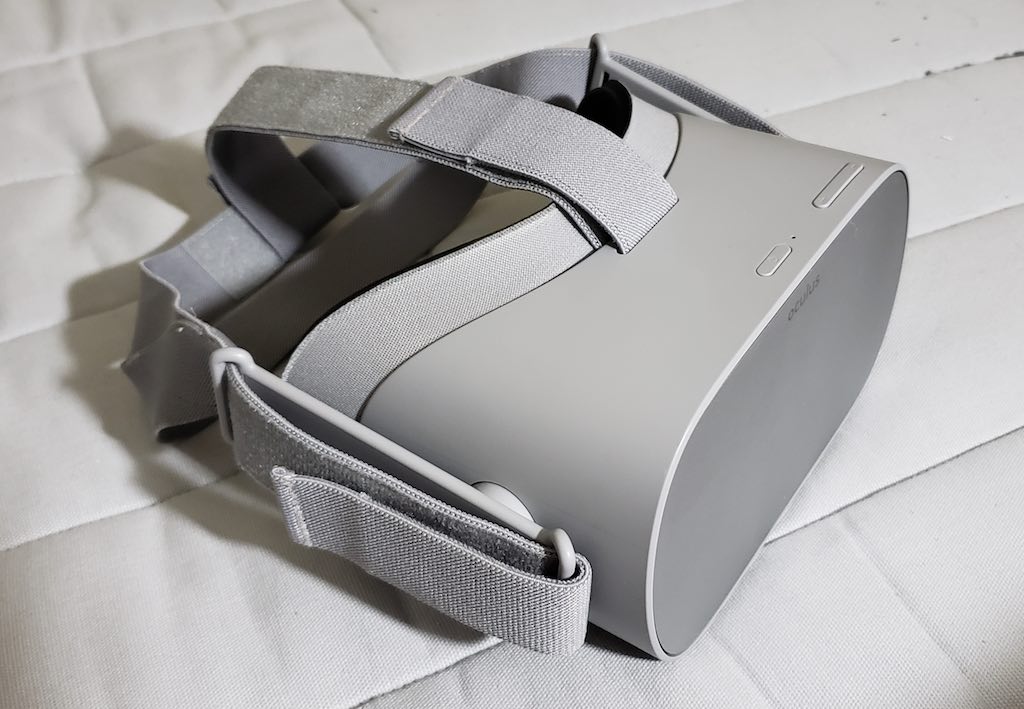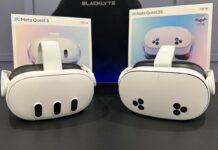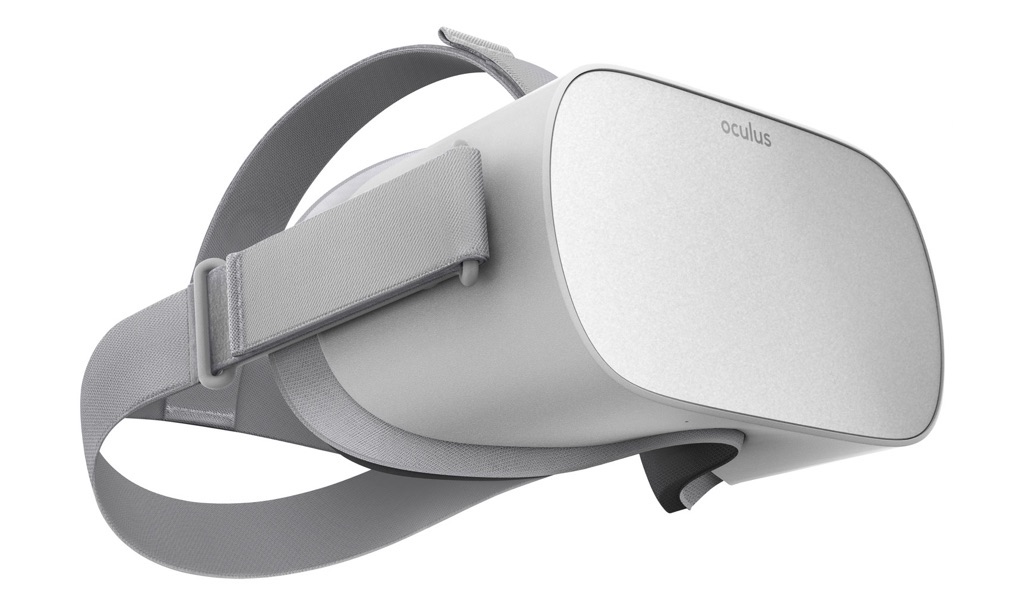 Recently I got the chance to try out the Oculus Go 64GB VR Headset for a couple of weeks. Although there is also a 32GB version for anyone that might be interested, today I can at least offer a few insights into the 64GB version. A couple of weeks may not seem like a massive amount of time when testing a product that seems to have infinite videos, games, and experiences to enjoy, but I tried out as many as I could so I could bring you as thorough of a report as possible. Read on for all the juicy details!
Recently I got the chance to try out the Oculus Go 64GB VR Headset for a couple of weeks. Although there is also a 32GB version for anyone that might be interested, today I can at least offer a few insights into the 64GB version. A couple of weeks may not seem like a massive amount of time when testing a product that seems to have infinite videos, games, and experiences to enjoy, but I tried out as many as I could so I could bring you as thorough of a report as possible. Read on for all the juicy details!
Oculus Go 64GB VR Headset Key Specs
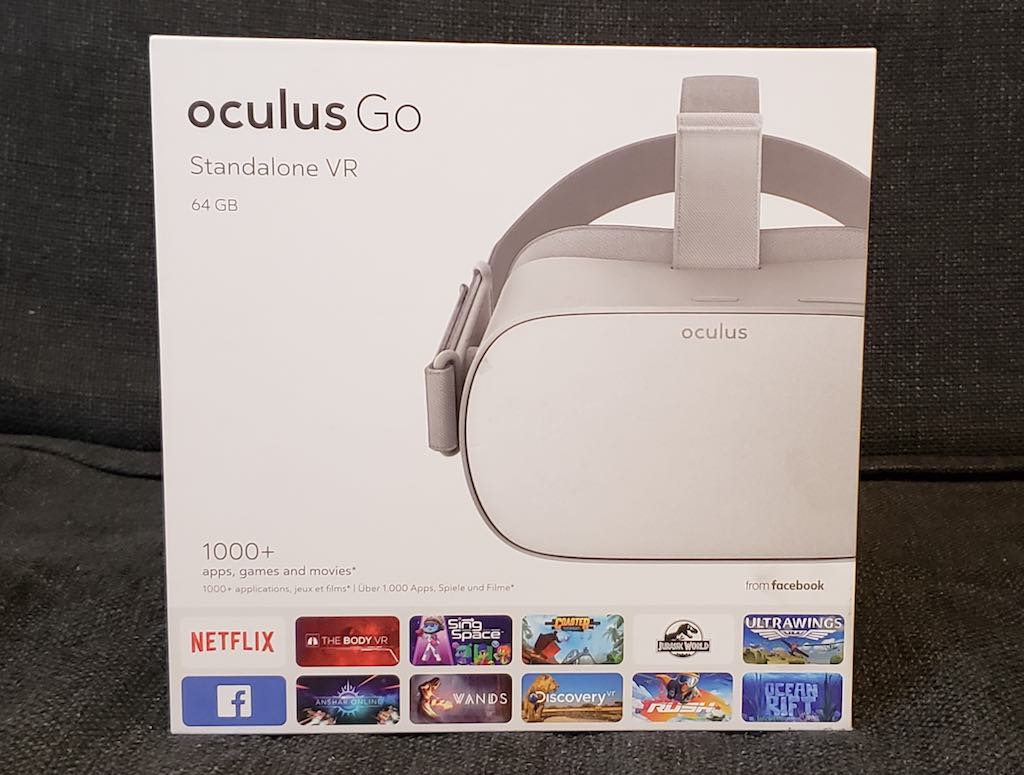
The Oculus Go is a “standalone” VR headset that brings you a multitude of immersive games, videos, and interactive experiences that are user-friendly and incredibly fun. Boasting 64GB of internal storage space, the Oculus Go is capable of downloading 360 degree apps and videos that run the gamut of possible human adventures and experiences. Featuring a 90 degree field of view and 2560 x 1440 HD resolution, the Oculus Go is designed to make you feel like you’re right in the middle of all the action, experiencing every thrill as if you were really there. Other features of the headset include integrated spatial audio speakers, a lightweight and durable design featuring breathable fabrics and comfortable injection foam padding, and a handheld input controller that allows you to engage in interactive games and activities for an enhanced level of fun and enjoyment.
Note that I put quotation marks around the word standalone in the above paragraph. This is because while the Oculus Go 64GB VR Headset requires no smart phone or other hardware to be inserted into the device itself, it still does require communication with your smart phone through the special Oculus App. This app allows you to download new apps and experiences either within the app or directly in the headset itself, and it also acts as a sort of intermediary for you to establish an internet connection between the headset and your home Wi-Fi network. As it is necessary to first create an online Oculus account and then sign into it via your phone, I don’t really like that they call the Oculus Go a standalone headset, but I certainly do enjoy the fact that I don’t have to weight the front of it down with my heavy Samsung S9+. Moreover, as everything else you need to enjoy cool VR experiences does come right in the Oculus Go box, I guess I can forgive their use of the term standalone.
Testing the Oculus Go 64GB VR Headset
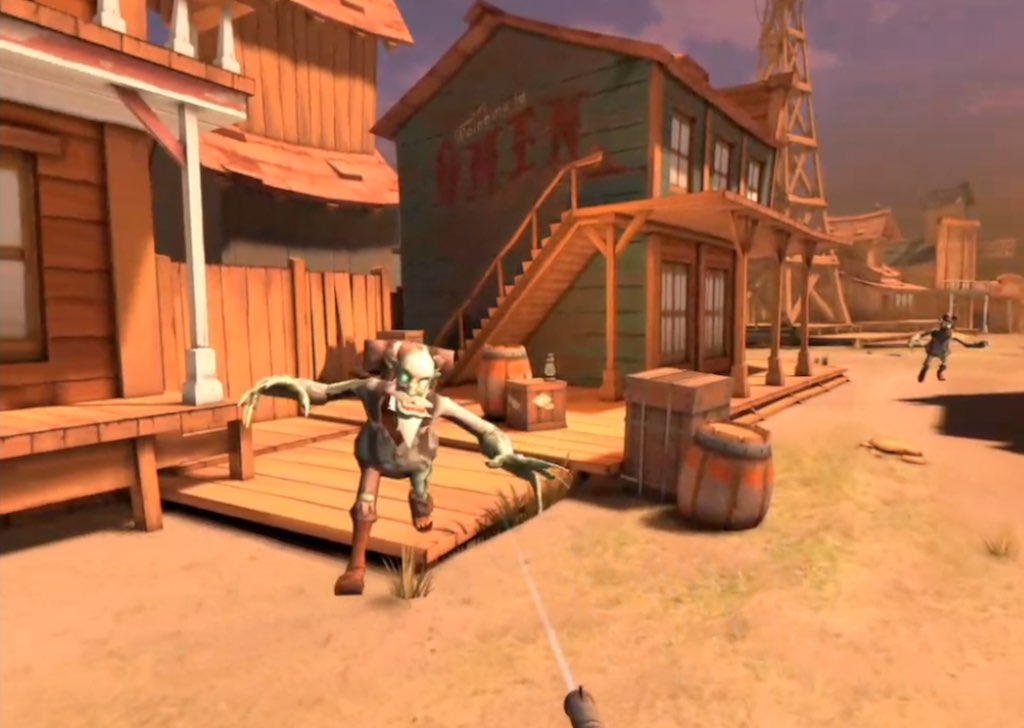
When I first received the Oculus Go 64GB VR Headset, I had difficulty setting up my Oculus account. For whatever reason, my smart phone would only allow me to get so far into the process before halting my progress. This was quickly rectified, however, when I logged onto my laptop and created an account via the Oculus website. Once I had my credentials in place, I was then able to use them to log into the Oculus App, from where I next had to establish a connection between the headset itself and my home Wi-Fi service. All of this took over an hour to do (i.e., to figure out) as the instructions didn’t anticipate that I would have a troubleshooting issue, and I just had to work things out for myself. Still, aside from a bit of initial frustration with the device, I was soon thoroughly enjoying shooting cowboy zombies (see image above) as well as a cool Jurassic World video that easily could have been a 3-4 minute outtake from the recent Summer blockbuster movie (see image below).

The Oculus Go definitely has what seems like unlimited experiences. In fact, every time I turned it on I was presented with new options. Many of them didn’t interest me at all, but those that did (and there were certainly plenty) were mostly a lot of fun. Aside from the ones already mentioned, I also repaired BB-8, was attacked by some kind of hideous alien creature in a horror themed experience, and rode several different roller coasters (both real and animated).
The battery life for the Oculus Go is roughly 2-2.5 hours (it varies depending on the kind of app you are using, with games being more resource heavy than videos). The charging time for the Go is given as about 3 hours, though I found that it took a bit longer than that for me (maybe as many as 4+ hours). Also, keeping the set plugged in and charging during use will buy you very little extra time, if any. You’re better off to just turn it off and charge it up fully before resuming your experiences. It’s a bit annoying that the charging time is longer than the discharge time, but a bigger battery would just make the set heavy and bulky. As it is, the set is relatively lightweight, and it’s very comfortable to wear and use. With adjustable (velcro) straps and plenty of padding where it rests on your face, it’s easy to wear for prolonged periods of time without getting tiresome (provided some of the experiences themselves, such as theme park rides, don’t make you queasy).
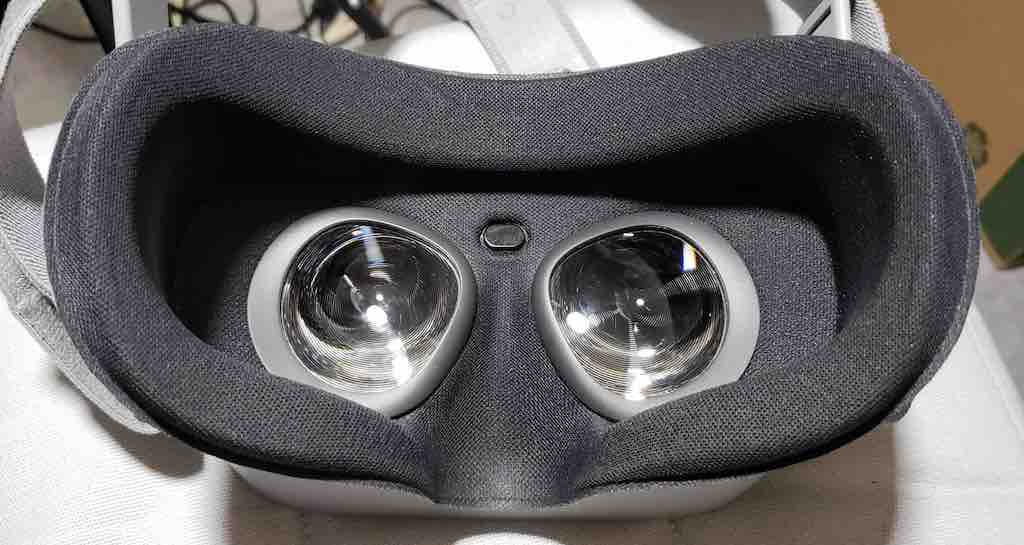
Although I mostly enjoyed the Oculus Go, it’s certainly not a perfect set. Among my major complaints about it is that the indent for one’s nose is much larger than necessary, thus allowing light in at the bottom of the set where the nose gap is. While somewhat annoying when you look down, it’s mostly easy to ignore when looking straight ahead. Of course, if it really bugs you a lot, you can always use the set in a completely dark room. Having a very large nose would also help considerably, but I’ll stop short of suggesting snout enhancement surgery.
Another issue that I had with the Oculus Go occurred when I tried to make the video that’s embedded below. Unfortunately, while the Go allows you to record video footage (or take still photographs) from right within the set itself, it doesn’t allow you to record the audio track along with the video. While this likely won’t be an issue for most people, anyone wishing to make videos of their various gaming exploits will find themselves having to buy 2 separate (albeit cheap) wires to record the audio via an external recording device (I used my smart phone and its audio recording app). Once that is finished, you’ll then have to splice the audio and video files together in an editing program. This seems like a lot of work for something that should just have been included anyway—particularly when it can be difficult to align the audio and video perfectly.
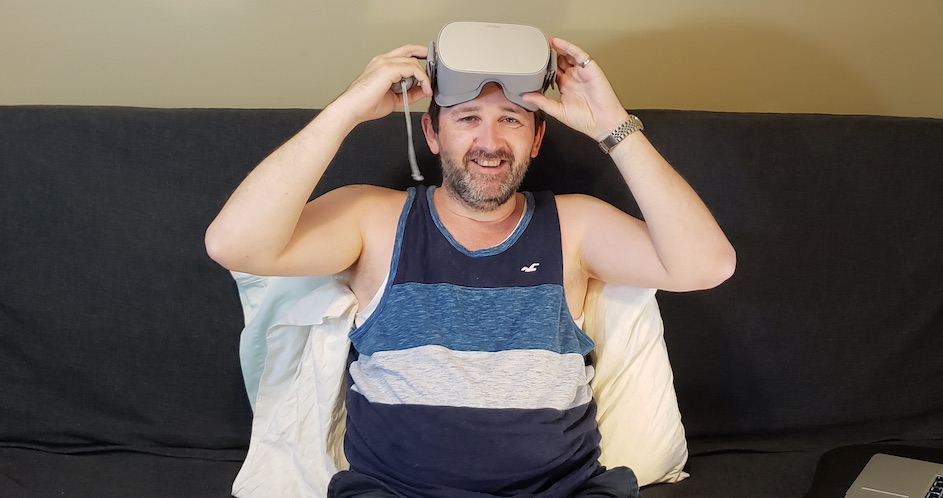
One alternative to the above recording setup is to livestream your gameplay directly onto facebook (just set the stream so that only you can see it) and then download the recording from there. This will give you both the audio and the video together, but the video quality will be much lower resolution than you’ll get when using the alternative, more complicated method. Of course, many of the apps/experiences don’t permit you to record them at all (especially live action videos), so the point is moot with regard to those. It mostly seems to be animations and gaming apps that do allow recording and sharing.
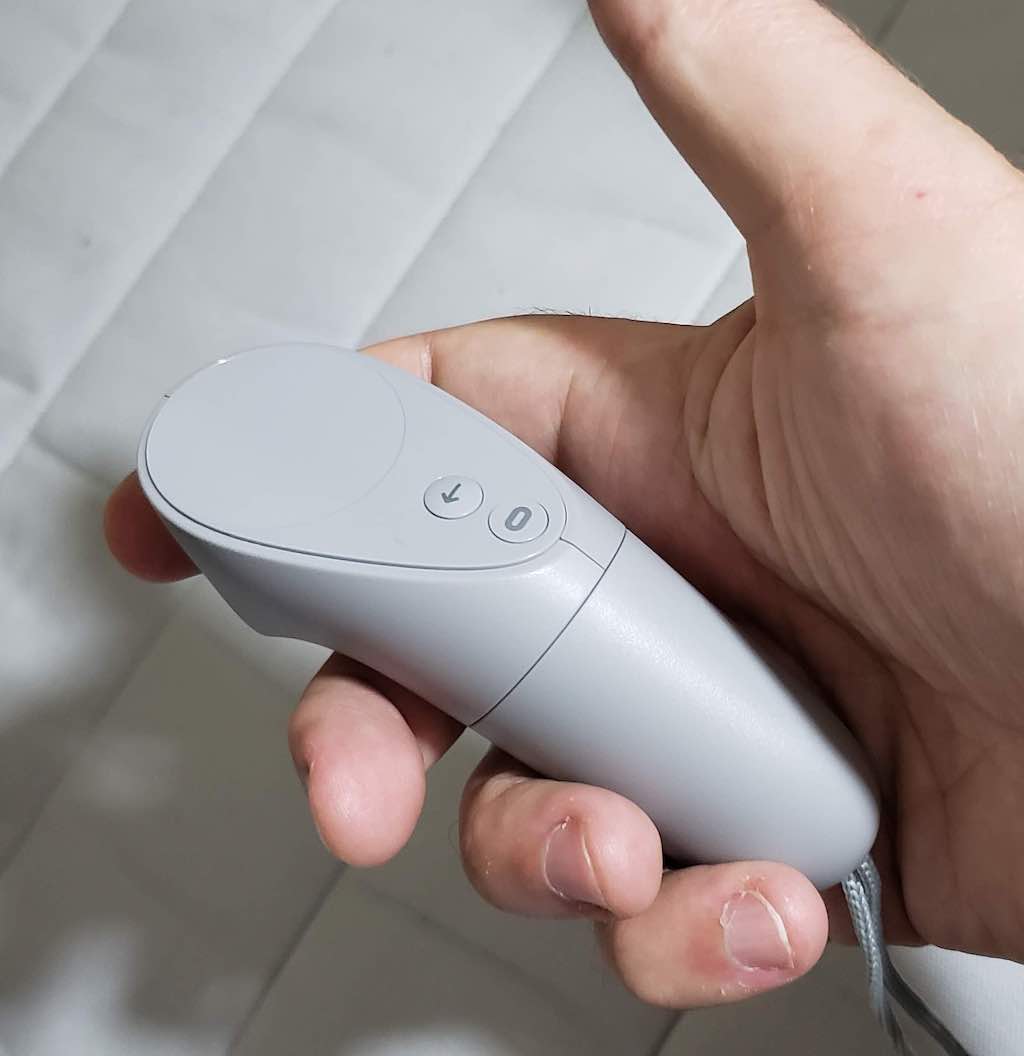 Lastly, a couple of the apps didn’t work properly for me, like the Casino VR gaming app that I was really keen to play. The silly thing just would never load. I assume it was simply a technical glitch that will probably have been resolved by now. The other app that I couldn’t use was an arcade game that informed me I that needed a controller to play the games (classic games such as Pac-Man). Apparently the controller that comes with the set (shown at right) isn’t always enough…
Lastly, a couple of the apps didn’t work properly for me, like the Casino VR gaming app that I was really keen to play. The silly thing just would never load. I assume it was simply a technical glitch that will probably have been resolved by now. The other app that I couldn’t use was an arcade game that informed me I that needed a controller to play the games (classic games such as Pac-Man). Apparently the controller that comes with the set (shown at right) isn’t always enough…
While this may seem like quite a few complaints about the Oculus Go, the reality is that most of these issues are relatively minor and unlikely to bother the majority of users. The fact is, the Go has so many different games, videos, and experiences that there are literally numerous options for virtually every type of user, and the included controller certainly didn’t stop me from shooting absolute hordes of zombies. Of course, if that sort of thing doesn’t interest you, you can always sit back and watch Netflix (via your existing account) right within the set if you want. It’ll even look like you’re watching your favourites on a massive 180″ screen. How cool is that?
Final Thoughts
